If you owned an Xbox 360 and hungrily devoured fast food in the early 2000s, chances are you’ve heard of Sneak King.
Yes, the “bargain bin” Burger King game that featured a man in a comically-oversized king mask creeping around while shoving food into strangers’ hands is a familiar sight for most Xbox 360 owners. It was gleefully weird, in-your-face, and positively riddled with meme potential, which we’re still seeing today.
Its companion titles, Big Bumpin’ and PocketBike Racer, were also viewed by many as “cash-ins” for Burger King as an attempt at capturing an important yet virtually untapped sector of the market: the gamer crowd. Even though the games were a critical disappointment, they were a certifiable hit with the public, moving 2.5 million copies in their first five weeks on sale, according to a 2007 Ad Age report. They’ve since gone on to something like cult status, serving as memories of a simpler time in gaming and fun, fast food-themed collector’s items.
More than that, they exemplify what can happen when a developer takes even a silly assignment like Sneak King seriously and puts its heart and soul into it. But how did this project come to fruition? The tale’s a bit complicated, but simply put, it was the perfect storm of great timing, an eager developer, and a brand that knew exactly what it wanted.
In fact, you could call the Burger King trio advergame royalty. Here’s how it all went down.
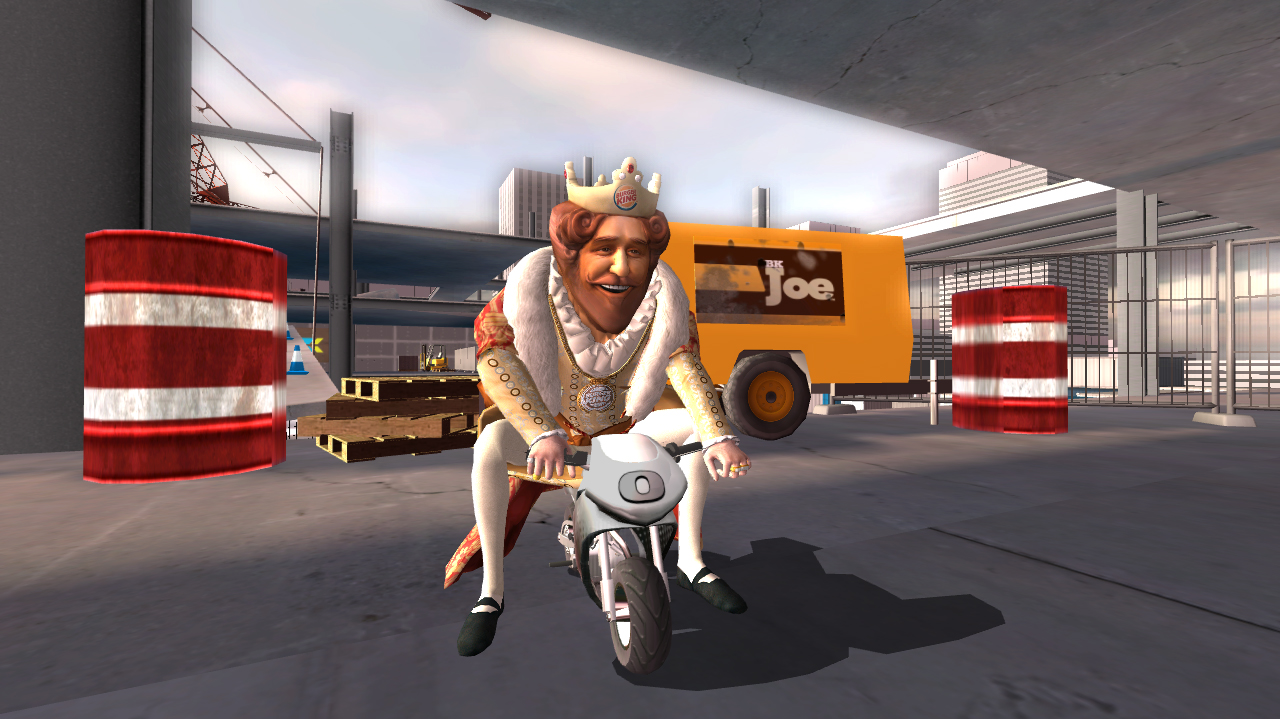
Enter the King
When it came to advertising in the 2000s, Burger King was more than willing to let fast food fans “have it their way,” routinely serving up ads and campaigns as fresh as they’d have us believe its burgers were. The seminal chain restaurant had always opted for “edgier” humor to push product. But in 2004, advertising agency Crispin Porter + Bogusky joined forces with Burger King, introducing a campaign that would forever transform the brand’s approach to pushing its wares.
Their strategy? Transform the chain’s then 30-year-old King mascot from a sprightly cartoon into a home invader in a bizarre, oversized mask. Sure, you might wake up in the morning with this strange man in your bed, but you got some delicious food out of it, too. People went wild for this creepy new King, which was as edgy and off-kilter as you could imagine for a burger joint at the time.
Incidentally, the “King” head itself was actually found by an agency executive on eBay. Originally used as a prop to blow up large balloons, it took quite a bit of TLC (and patience) to transform into the now-iconic mask. That’s likely part of what gave it such a uniquely disturbing feel—you’d never seen anything like it before.
But advertising had to stretch beyond just that of TV commercials and an unsettling new face of the company if it were to be truly effective—and that meant potentially expanding into the gaming world. Video game tie-ins for food and beverages were nothing new at the time, of course. We can cite examples all the way back to the Atari 2600 and Intellivision’s Kool-Aid Man and McDonald’s ill-conceived M.C. Kids on the NES. Everything from Domino’s Noid character to 7-Up’s Cool Spot got its own video game in the name of selling junk food to the masses (especially kids). In the 2000s, however, no one was really properly utilizing the space to push Whoppers and fries.
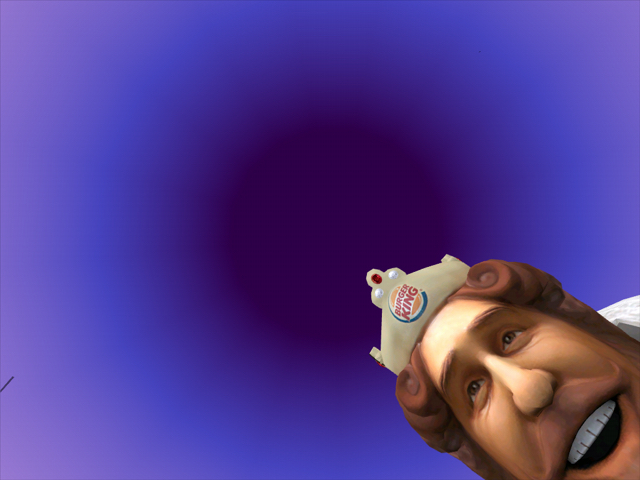
By 2006, the King character had been creeping around for two years and Microsoft’s Xbox 360 was a year old. Developers, slowly weaning themselves off the original Xbox, were creating bigger, better games for the new platform.
As it turned out, Burger King and its ad partners were looking for a few good developers for a radical new idea for the brand: games based on their newest mascot. It just so happened that U.K.-based developer Blitz Games was open for business. It was time to get cooking.
Marketing Blitz
Blitz Games’ previous claim to fame was a frenetic launch title for the original Xbox called Fuzion Frenzy, a collection of 45 minigames. It displayed on just about every Xbox demo kiosk around the country when it debuted, offering gamers a taste of its fast-paced party action. The game released to mostly positive scores, and Blitz enjoyed quite a bit of success from its first partnership with Microsoft.
Former Blitz Games head Philip Oliver noted that, at the time, the team was in fact looking to work with Microsoft again on something akin to Fuzion Frenzy. As Oliver recalled, Hudson Soft (Bomberman, Mario Party) “nipped” the license from Microsoft for the 2007 sequel Fuzion Frenzy 2, which meant development would change hands. With no other projects from Microsoft on the horizon, Blitz Games was free to pursue new ventures, and the team wanted to continue working with the company on something new.
“We were very pleased and proud of Fuzion Frenzy, and kept the relationship going with Microsoft in [the] hope of another opportunity,” said Oliver of the team’s next phase. “We weren’t expecting that to be a set of crazy games for Burger King, with high ambition and a very tight schedule.”
After learning Microsoft had contracted Hudson Soft for Fuzion Frenzy 2, Oliver discussed the potential of creating a series of new Xbox Live Arcade titles with then-portfolio manager Ross Erickson. Unfortunately, this initiative was stymied by a lack of production money. At the time, the Xbox Live Arcade budget was bereft of extra funds, and Erickson couldn’t promise much. That meant that the team would need a cash injection from advertisers to make any sort of real magic happen.
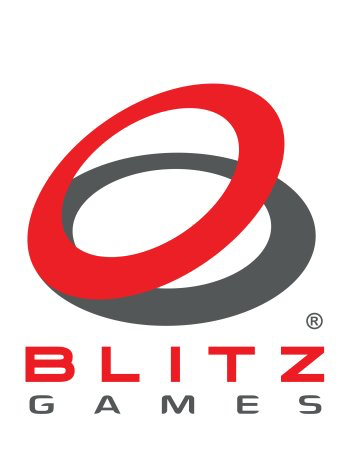
Given that Microsoft would no longer be using Blitz Games for Fuzion Frenzy 2, Erickson offered to pass Oliver and his team any potential leads on advertisers looking for some type of product placement so they could potentially work something out. Only two weeks passed before Erickson made the call to Oliver in early 2006: Burger King wanted to put together three special “advergames” based on its fast food empire—specifically its iconic King character.
Thanks to the team’s existing relationship with Microsoft, Blitz had the opportunity to draft up a few ideas for both Burger King and its agents, who were eager to get started.
“We ended up in this big meeting in Times Square composed of Burger King, two marketing agencies—Equity Marketing Group (EMG) and Crispin Porter + Bogusky (CPB)—ourselves, and Microsoft,” said Chris Swan, project manager of the Burger King titles at Blitz Games.
“We discussed the high-level goals: three games that would dual-boot on Xbox and Xbox 360, [have] online multiplayer, and [could be] finished within 7 months.” For any developer, this would have been a set of lofty accomplishments, but Blitz Games was determined to make the timetable—and its vision—work.
“It was quite a delicate conversation to be had with so many stakeholders—most of whom were not gamers—to manage expectations and explain why a small number of levels would be better than aiming too big and losing all quality. Thankfully, two of the CPB guys were gamers and helped back us up on that front.” And with that, a partnership was struck between the parties, with Blitz Games handling a set of games for the fast food giant going forward.
“We had mentioned to Microsoft that we thought our small, Fuzion Frenzy-style games would be very appropriate for marketing products,” Oliver recalled. “Apparently, Burger King agreed. But they made it very clear that the most important thing to them was to engage the target audience with high-quality fun. We were to avoid creating cheap, generic Flash games with logos plastered everywhere, which is what many advergames had been in the past.”
“The games needed to be incredibly on-brand for Burger King, and we had never appreciated the effort and depths that these agencies go to when they create these novelty characters.”
Chris Swan
Originally, Blitz Games was tapped to develop the games as digital-only Xbox Live Arcade titles, but this was eventually scrapped in favor of Burger King’s desire to make the games playable on the original Xbox as well. Prepping the games for Xbox Live Arcade meant the games would no longer be feasible for the original Xbox, which didn’t support the new online distribution service.
Thankfully, that wasn’t an issue for Microsoft, who agreed to put both Xbox 360 and Xbox versions of the game on the same disc. This is something of a unique situation for most Xbox 360 titles, which obviously didn’t typically ship with dual versions of games on one physical copy. It’s not a practice that’s widely used for modern titles, either.
“We had to effectively do three original games, two SKUs of each, in seven months,” said Oliver in a 2006 interview with Gamasutra. “Scary, but we did it!” Luckily, the team had worked diligently to make all of its previous games cross-platform in a bid to anticipate the needs and wants of various publishers. This meant it was “pretty easy,” according to Oliver, to generate the Xbox versions of the games from the assets they were already using—it was a process they were already prepared for.
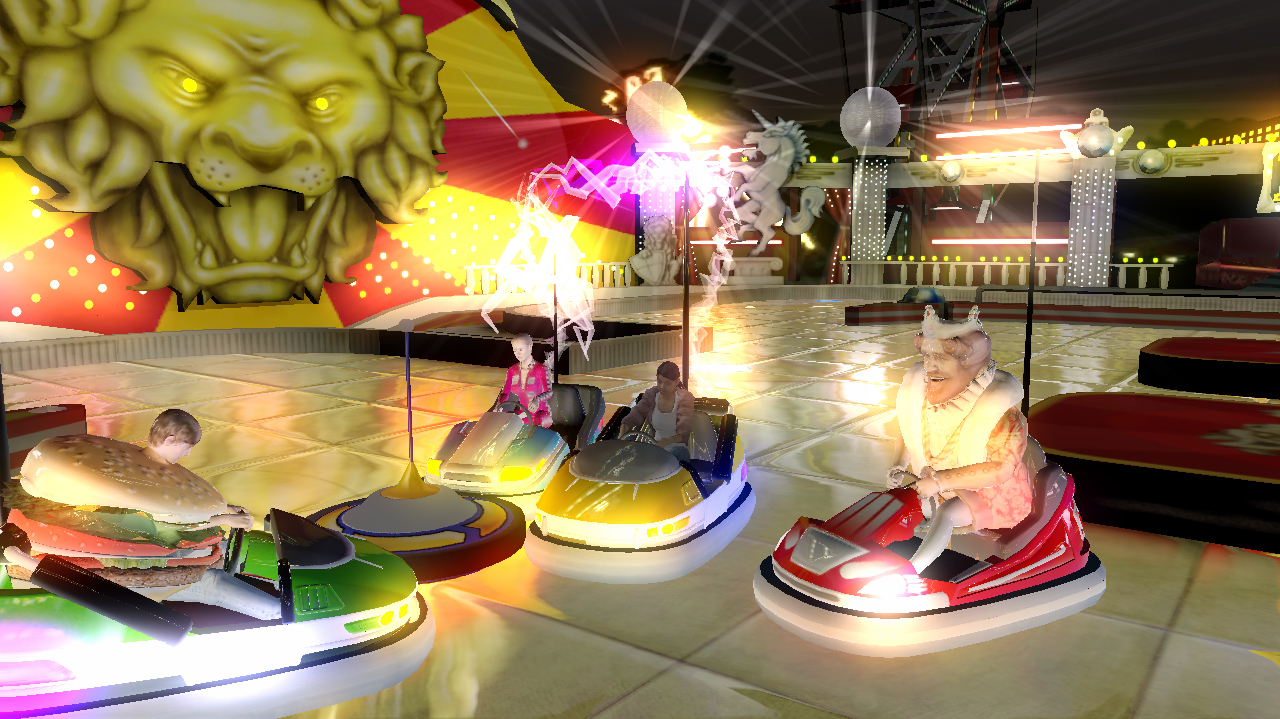
Game On
The three games the team ended up producing were hilarious titles appropriate for bite-sized or group play, each with its own distinct vibe: PocketBike Racer, Big Bumpin’, and Sneak King.
Burger King’s team came in with an “awful lot of ideas,” Oliver recalled, but both groups came to a compromise: the Burger King representatives would get to fully design one title, Blitz Games could helm one project, and they’d meet in the middle on the final game. PocketBike Racer was born of their compromise, Big Bumpin’ was created solely from Blitz’s ideas, and Sneak King was all Burger King.
The games were to take place “in the Burger King universe,” and the restaurant’s agents painstakingly ran down all the details they wanted covered in the games. For instance, in PocketBike Racer, the team spent a lot of time in the concept art stage, according to Swan, presenting a multitude of paintings and sketches of each location and receiving feedback on the “correct color for the ‘ranch road,’ which ingredients should be in the giant burgers,” and more.
Still, Blitz had quite a bit of creative freedom, in terms of gameplay and visual effects, but the fast food giant knew exactly what it wanted.
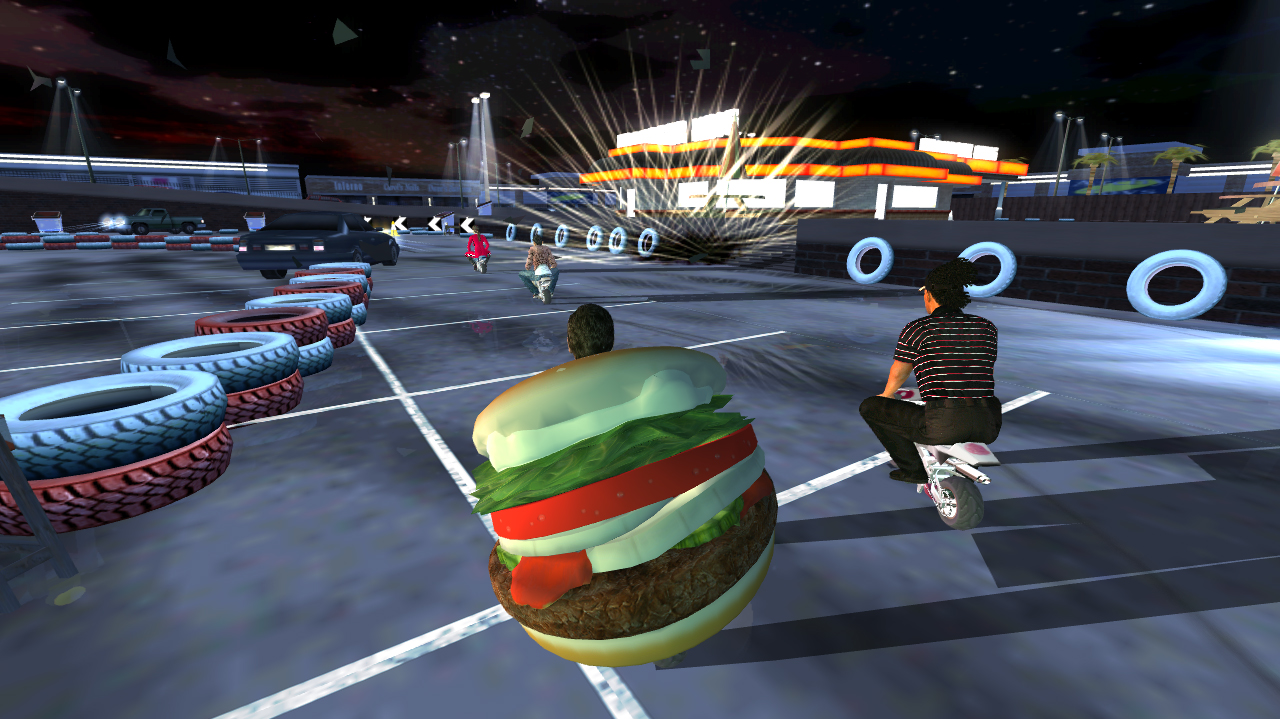
“The games needed to be incredibly on-brand for Burger King, and we had never appreciated the effort and depths that these agencies go to when they create these novelty characters,” Swan explained. “We had some lengthy presentations from Burger King and the agencies on the King, Subservient Chicken, [and other characters] as well as their back stories, how they would approach situations, and so on.”
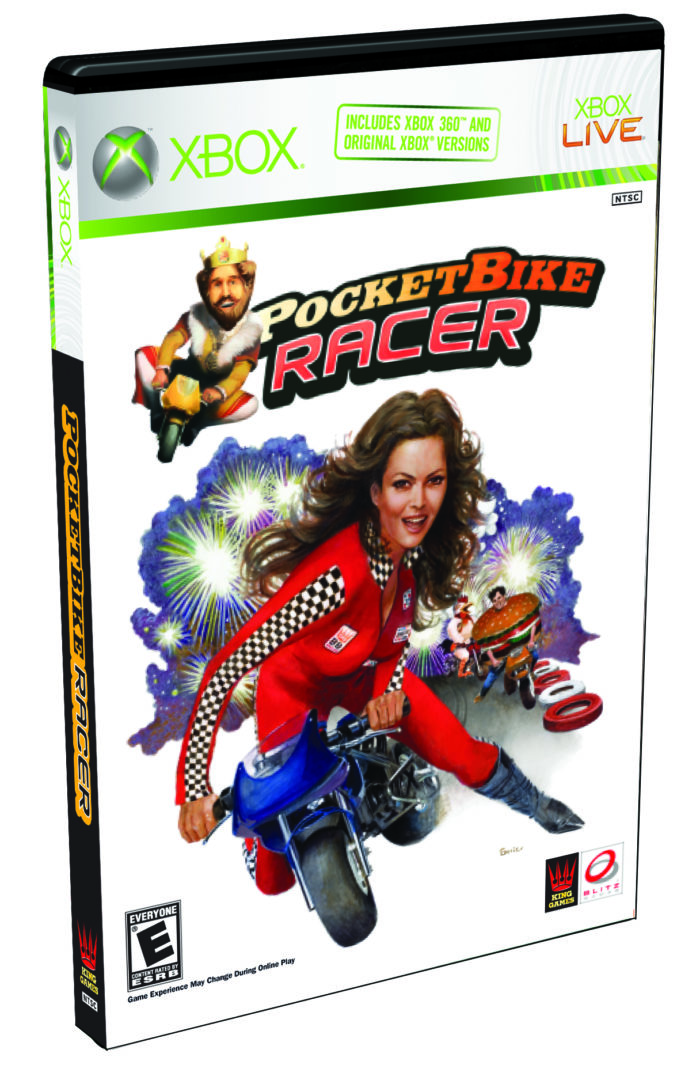
Blitz Games
PocketBike Racer was a standard kart racing affair, pitting the ghoulishly grinning King against other colorful characters, including the bizarre Subservient Chicken of 2004 viral internet fame, a man in a ridiculous burger suit, and a woman in a red onesie. Swan referred to it as a “fairly obvious” Mario Kart-style of game where the team had to “persuade the physics programmer to remove a lot of the ‘reality'” from its physics systems.
For a few bucks, you got several dirt tracks built into neighborhood suburbs, construction zones, and other wacky areas. It put on zero airs about what it had to offer, serving up a fun but mostly lukewarm arcade racer that didn’t always cut the mustard, according to critics, when it came to beefier options like Mario Kart or Crash Team Racing. But then, it wasn’t aiming to—it was a game you got with a Burger King combo, after all.
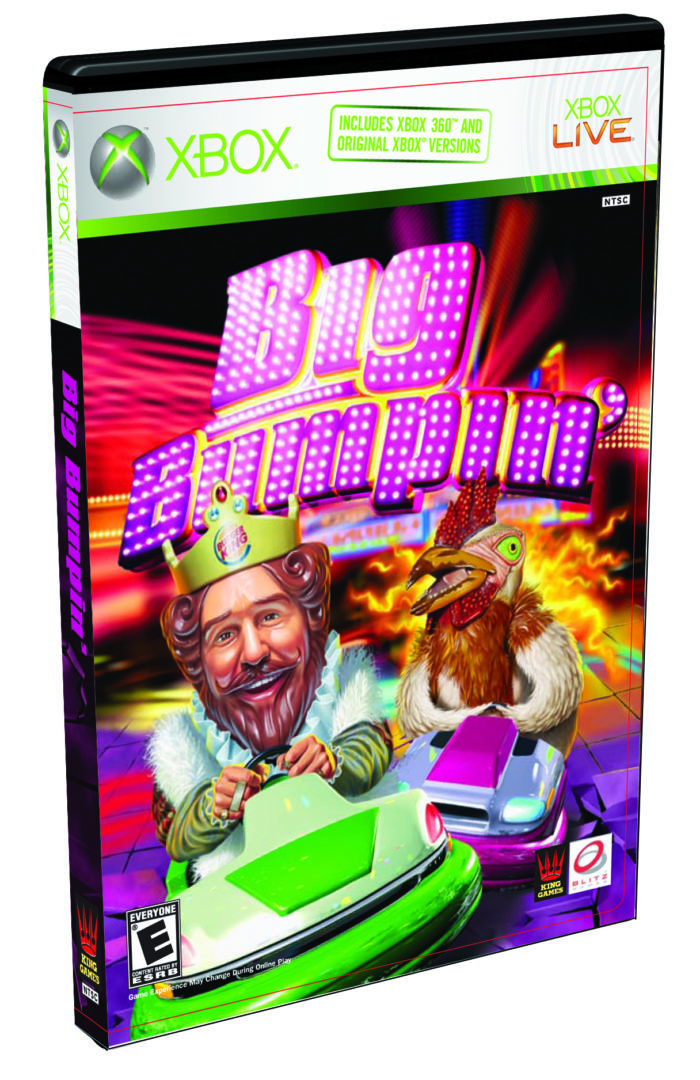
Blitz Games
Big Bumpin’ was based on theme park-style bumper cars, with the King and Subservient Chicken making additional appearances alongside actress Brooke Burke. Players take to colorful bumper cars and compete in various arenas throughout several minigames, collecting power-ups like the Ice Box and the Broiler to “own the puck,” avoid obstacles, and more.
Taking more than a few cues from Blitz Games’ experience with Fuzion Frenzy, it offered a raucous multiplayer mode that was best played with a group of friends and a few beers on hand. Out of the trio of advergames, this is the one that most strongly echoed the classic Xbox minigame collection.
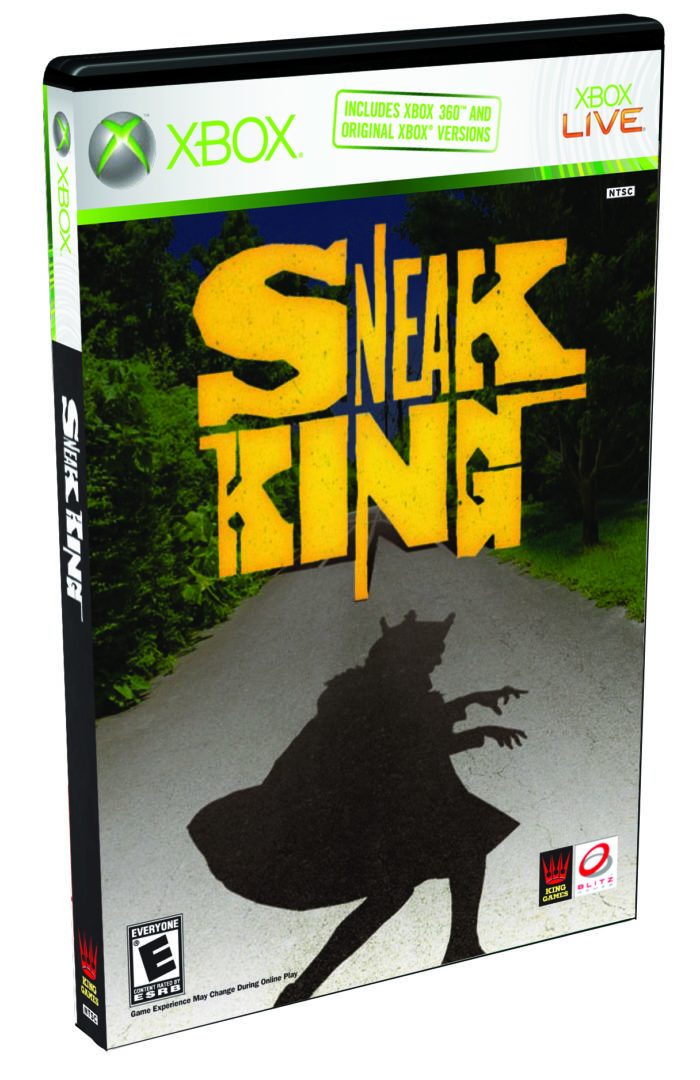
Blitz Games
Sneak King was, by far, the meatiest of the trio. Players take on the role of the King once more as they work to become the living embodiment of creepiness. Just like we saw the King do in commercials all over TV back in the 2000s, players lurk in the shadows, waiting to pounce on unsuspecting citizens walking the streets to serve them various BK products.
Using a special sensor, you have to seek out the hungriest customers and zero in on them with the kind of stealth tactics that wouldn’t be out of place in a game like Metal Gear Solid. You’ve got to ensure each person is caught unaware as you sneak up on them and whip out a tasty sandwich, pulled straight out of, well, the inside of the King’s sweaty mask, probably. While the game was fun in and of itself, it was the King’s infectiously weird personality that truly pulled everything together.
“The subtleties around what the King would and would not do were amazingly detailed,” Swan said. “That level of detail definitely paid off though. Burger King and the agencies helped to guide us to the right level of ‘creepiness’ for Sneak King.”
These advergames’ “it” factor (and admittedly, much of Burger King’s loving micromanagement) owed much to the way the King character moved about and interacted with others—especially when the mascot was center stage. While Big Bumpin’ and Pocketbike Racer were entertaining enough, Sneak King is the title most players look back most fondly upon, and that’s due at least in part to how the character moves. Swan noted that some of the funniest, most “bizarre” moments during the games’ development cycle had to do with the King’s animations.
“We had no idea that there was one particular actor who was ‘the King’, and the only person who could move in the right way for him,” Swan explained. Apparently, the actor “couldn’t do the moves correctly” if he wasn’t actually wearing the actual King head as seen in the TV commercials, which meant concessions had to be made for both sides.
In this case, both the King head and the actor were flown to a motion capture studio in the U.K. so that all of the special animations and “Sneak King flourishes” could be performed with the precision needed to give the game its special touch. Of course, this led to some hijinks with the dev team—who wouldn’t play around with that bizarre mascot head if given the chance?
“I remember that the King head arrived a day before the rest of the crew, and we all took turns wearing it and filming each other running around the studio doing silly stunts,” recalled Swan. “It was only when the actor and team turned up the next day and gingerly picked up the ‘the only King head in the world’ that we realized we perhaps hadn’t given it the appropriate respect the day before!” Swan joked that the team kept those antics “very secret” from the Burger King team, for obvious reasons.
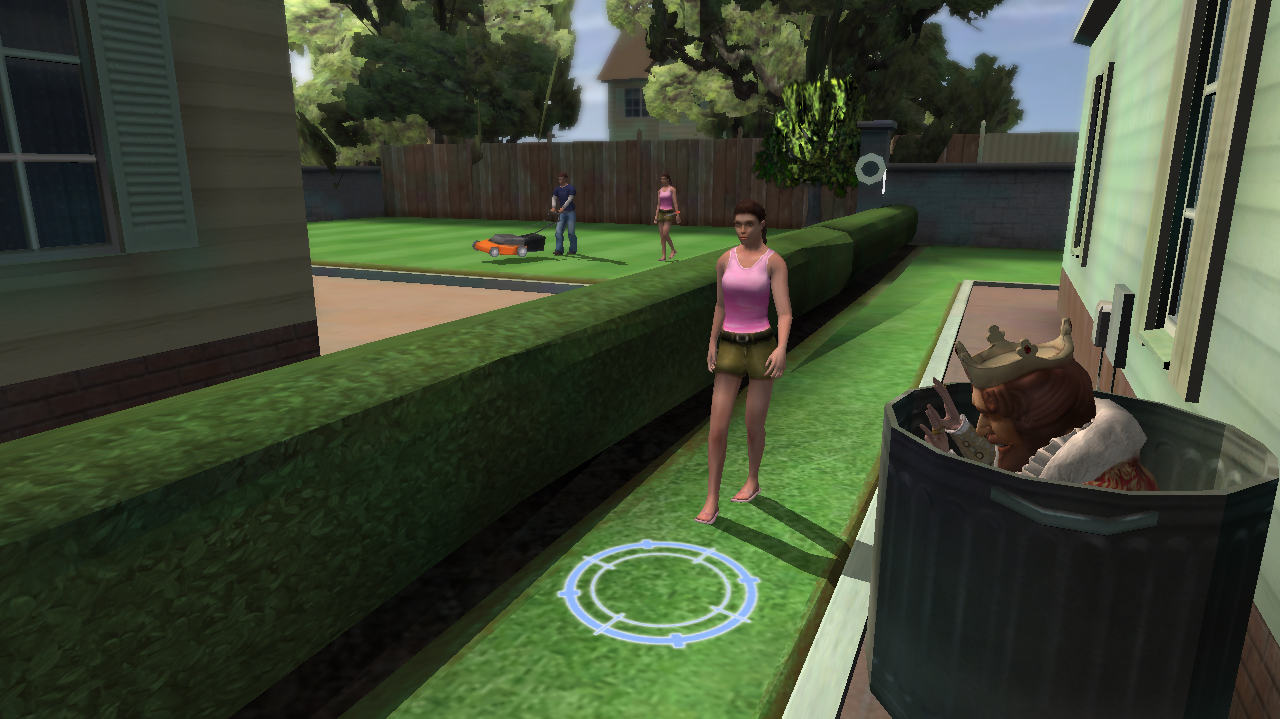
Credit: King Games/Blitz Games
Long Live the King
After all the hard work Blitz Games and its Microsoft and Burger King liaisons poured into their titles, PocketBike Racer, Big Bumpin’, and Sneak King ended up being hits. With the advergame trio completed and shipped within the span of seven months, they were off for public consumption in what felt like the blink of an eye.
Production began in February 2006, and the games were thrust out onto the market, being sold with Burger King value meals for $4 at locations across the country beginning in November 2006. Despite being panned by critics, the public response to the games was shockingly positive, even to the team.
“It was pretty amazing,” Swan said. “We really weren’t sure if most gamers would just call them a complete cash-in from Burger King—especially as people had to pay for them—but the price point and the strength of the brand instead made them a bit of a cult hit.”
Blitz Games experienced a near-immediate financial boost after the games hit the market, which allowed the team to continue with projects it had been working to bring to fruition, such as the company’s downloadable games division, Blitz Arcade.
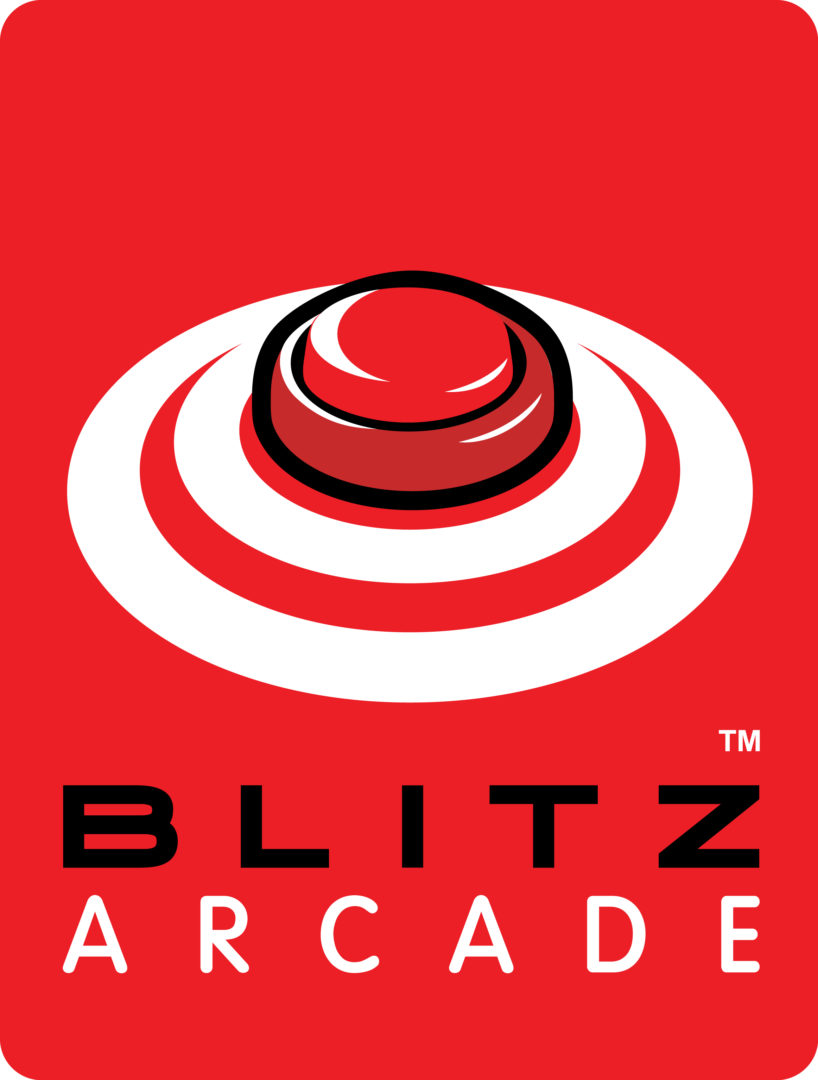
the success of the Burger King games.
Credit: Blitz Games
Collectively, sales across all three games helped rank them among the top 10 best-selling games of 2006, according to Ad Age. With sales outpacing even that of the ridiculously popular World of Warcraft, it was clear that Blitz Games had done something very, very right.
According to Russell Klein, Burger King’s president of global marketing, strategy, and innovation at the time, the games were a key part of a 40 percent increase in sales for the chain. Burger King attributed most of its success to the quirky little games themselves, which speaks volumes for what they were able to accomplish.
“I ended up going to a Microsoft-hosted party at E3, having my photo taken and giving autographs to developers from as far away as Japan! I never thought that kind of reaction was going come from these games,” Swan said.
But with the success the games ended up finding, would the ex-Blitz Games team change anything about the way things went down?
“I don’t think we would have changed much,” said Swan, speaking on the entirety of the games’ development cycle. “The riskiest game was Sneak King, which became known as the ‘stalk-em-up’ game. It wasn’t a very safe or proven set of gameplay mechanics, and we unfortunately ran out of iteration and polish time for that game as the artwork was put in place. But then even though Sneak King felt like the weakest game from our development and polish perspective it was probably the best received, and certainly the most well-remembered!”
So, there you have it—the history of the Burger King “advergames” may be a weird and ephemeral chapter of video game history, but it’s also a surprising little success story. The next time you see one of these titles chilling in a bargain bin at your local game store, stop and think about the time and energy expended to bring them to reality: the King’s actor, the determined developers, and the masterminds at Burger King. Whether you love these advergames or hate them, you can’t argue with their legacy.
Header image: King Games/Blitz Games

Brittany Vincent has been covering video games and tech for over a decade for publications like G4, Popular Science, Playboy, Empire, Complex, IGN, GamesRadar, Polygon, Kotaku, Maxim, GameSpot, Variety, Rolling Stone, Yahoo, and more. She’s also appeared as a speaker at video game conventions like PAX East and has coordinated social media for companies like CNET. When she’s not writing or gaming, she’s looking for the next great visual novel in the vein of Saya no Uta. Check out her work at brittanyvincent.com.
One comment